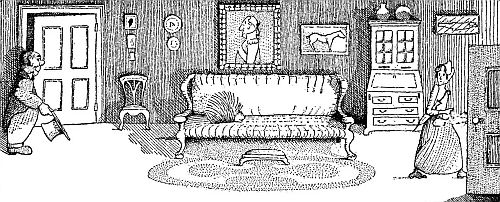I once had a conversation with an advisor about the possibility of contracting academic shellshock from researching and writing about war literature. I believe we agreed that it was indeed possible. Truly, it isn't always easy engaging so deeply with the grim and arduous topic of war and its literary expressions. But no grad student would describe any dissertation as a walk in the park. Thus, how much of my occasional academic malaise has to do with war and how much to do with the mere process of writing a dissertation remains a mystery as yet unsolved.
A surprisingly effective remedy came my way this evening, though, from none other than the wonderful Dr. Dolittle. Yes, that Dr. Dolittle, the protagonist of Hugh Lofting's endearing series of children's books, the first of which was published in 1920.
My route was circuitous, as usual, but I began by looking for further materials related to service animals in the First World War. I found a veritable menagerie in the IWM's collections database, including reindeer (yes, reindeer), an eagle, pigeons, a lemur, dogs, cats, mules, and horses. And then I found this charming photograph:
 |
| Author Hugh Lofting |
 |
| Varges Ariel. British Officer of the Army Veterinary Corps in Salonika with his Pets, 1916. © IWM, Item Q 32252. |
The British veterinary officer with his jackdaws, goose, dog, and wolf cub seems a veritable Dr. Dolittle, friend to and communicant with all creatures great and small. The photograph made me go hunting for information about the books, which I first encountered in a school library as a child of about eleven.
To my surprise, I found that Dr. Dolittle is in fact a ghost of 1914. His creator, English-born, MIT-educated, civil engineer Hugh Lofting (1886-1947), served with the Irish Guards in the First World War. When writing home to his children, Lofting chose to protect them from the gruesome details of trench warfare. Instead, his letters featured the beginnings of the Dr. Dolittle stories. It is amazing to think of the way this fictional character allowed Lofting to create a bit of innocence amid the strife of the battlefield.
 |
| “'Lord save us!' cried the duck. 'How does it make up its mind?'” The Story of Dr. Dolittle. |
He was very fond of animals and kept many kinds of pets. Besides the gold-fish in the pond at the bottom of his garden, he had rabbits in the pantry, white mice in his piano, a squirrel in the linen closet and a hedgehog in the cellar. He had a cow with a calf too, and an old lame horse—twenty-five years of age—and chickens, and pigeons, and two lambs, and many other animals. But his favorite pets were Dab-Dab the duck, Jip the dog, Gub-Gub the baby pig, Polynesia the parrot, and the owl Too-Too.
--The Story of Dr. Dolittle, p. 3.
 |
| “And she never came to see him any more” (A disgruntled patient leaves after sitting on a hedgehog) The Story of Dr. Dolittle. |
There are many fantastic web resources on Dr. Dolittle, including full-text (with illustrations!) books on Gutenberg and Google Books. Karen Welbourn's Puddleby-on-the-Marsh website has a treasure trove of information and materials related to Lofting and Dr. Dolittle.
I hope you have enjoyed this lighthearted little jaunt with Dr. Dolittle and me. This merry ghost of 1914 certainly brightened a grad student's day of slogging through the dissertation trenches.
© Fiona Robinson
What a great topic! I know what you mean about shellshock -- sometimes I just can't bear to read any more about the trenches.
ReplyDeleteThank you for reading--I'm glad you enjoyed this post! Yes, secondary shellshock from studying a war for years and years is a problematic ailment...It's good to get a bit of a break or look for lighter topics within the field for a while.
Delete